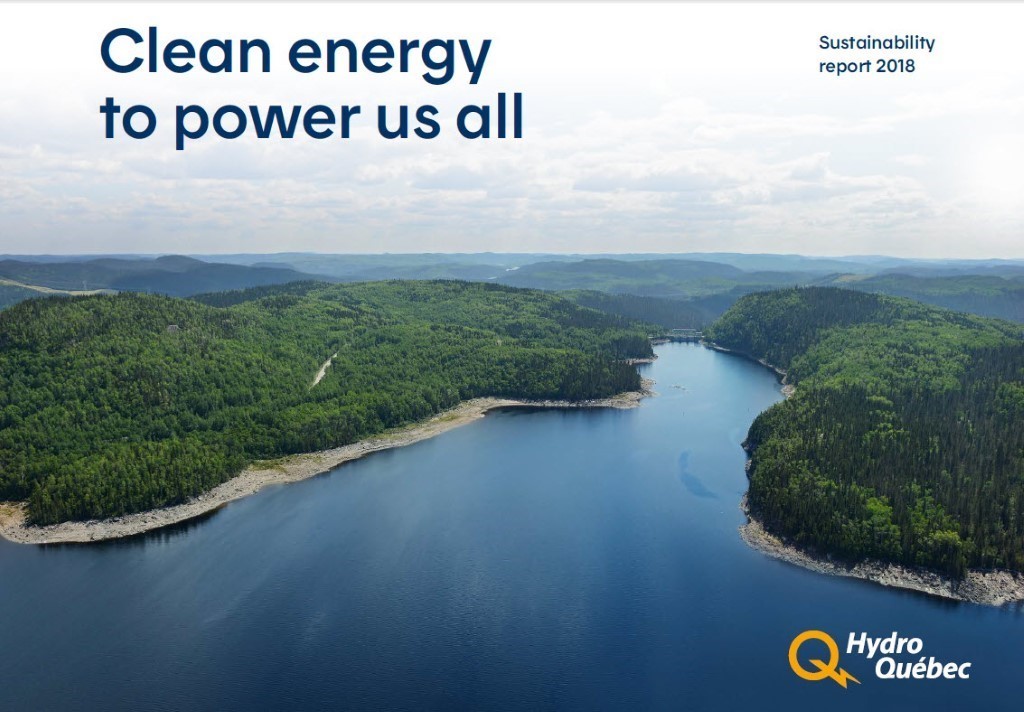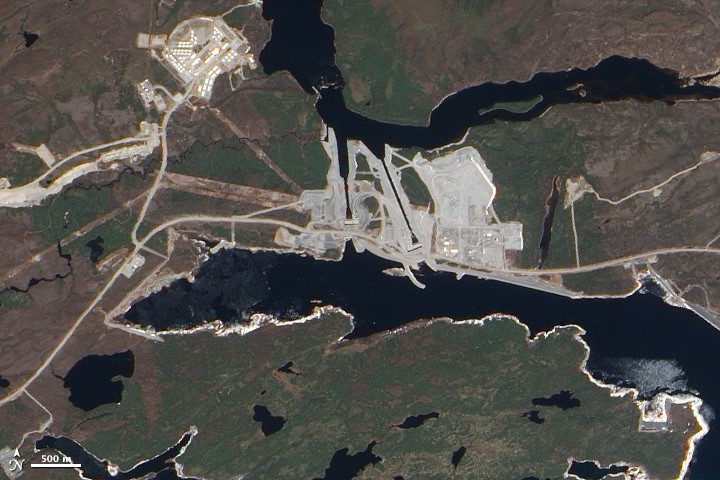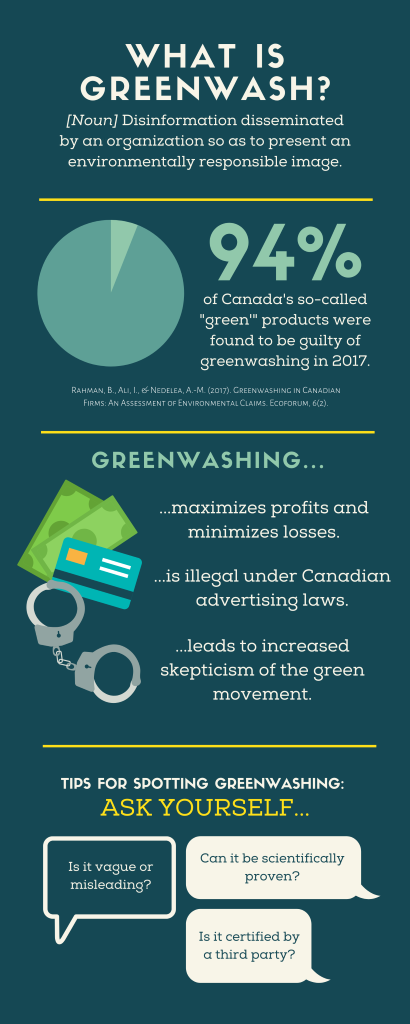By Andrea Sutherland
Companies use terms like “clean,” “green” and “environmentally-friendly” to celebrate their environmental sustainability, but without the evidence to support their claims, they are not ecological warriors; they’re greenwashing. The term “greenwashing” has been around since 1986, when environmentalist Jay Westerveld used it to describe a hotel’s effort to encourage clients to reuse towels. The hotel framed the initiative as a conservation effort when, in reality, the program was designed to reduce costs.
Almost forty years later, I joined Wa Ni Ska Tan as a summer student to study greenwashing in Canadian hydropower companies. With research well underway, I figured I would take some time to share my recent findings.
Greenwashing is most commonly defined as “Disinformation disseminated by an organization so as to present an environmentally responsible public image”, but in simple terms, it describes a disconnection between a company’s green talk and green walk. In general, an organization is greenwashing when their promises and practices don’t match up.
Despite being illegal under Canadian advertising laws, greenwashing is a common business practice. A recent study found that 94% of so-called “green” products surveyed in Canada were linked to at least one greenwashed claim. As if that weren’t enough of a concern, a claim-based approach is only one type of greenwashing. Companies can also develop an undeserved environmental reputation with motive or executional greenwashing.
When an organization’s motive greenwashing, they are highlighting their environmentally conscious practices without revealing the true reasons behind them. For example, on their website, Hydro-Québec describes their commitment to greenhouse gas monitoring studies since 1993. They say the objective of these studies is to “improve understanding of the impacts of [their] reservoirs on GHG emissions,” among other things. But this longstanding environmental commitment is actually just a side effect of a seemingly unrelated decision. In reality, it was “basically because of the U.S.” that they began measuring emissions, according to their Senior Environmental Advisor, Alain Tremblay. When Hydro-Québec was looking to export power to the United States, Americans were concerned that reservoirs were high emitters of greenhouse gases, so the crown corporation began their monitoring programs to prove them wrong. Years later, they concealed this economic expansion strategy under a façade of environmental responsibility, a perfect example of motive greenwashing.
Executional greenwashing, on the other hand, is the use of colours and images to create an environmentally conscious image without being held accountable to any particular claims. In BC Hydro’s Brand Guidelines, a document that outlines the publication requirements within their company, they claim “[their] colour palette is inspired by [their] beautiful province and the landscape – mountains, forests, earth and water.” By saying so, BC Hydro is admitting to executional greenwashing. They have explicitly designed their colour palette to create an environmentally-friendly reputation without having to make a single promise to their customers.
Another example of executional greenwashing can be seen in a Hydro-Québec press release:

This photo’s wide reservoir and vast forests frame hydroelectricity as an environmentally friendly source of energy. Meanwhile, images hidden from the spotlight will show a very different, yet significantly more realistic, representation of Quebec’s hydropower:

This aerial image shows the cleared forests and flooded reservoirs of Hydro-Québec’s Eastmain-1-A project, conveniently ignored by their executional greenwashing.
Greenwashing is appealing to organizations because it allows them to benefit from a green reputation without making any changes. When companies greenwash, they can celebrate their smaller victories to distract the public from their much greater faults.
The guiltiest greenwashers are generally energy companies, since they’re desperate to hide their large ecological footprint. I’ve found that hydroelectric corporations in Canada are no exception. While their overall environmental impact is less than that of traditional gas plants, Canadian power utilities are determined to label hydroelectricity, and all of their existing infrastructure, as a climate change solution. Energy companies are also likely to use the complexity of their practices to regulate public opinion. That is to say, an energy company such as Manitoba Hydro will position themselves as the leading expert in their field. They will control the funding and regulate studies, effectively painting their hydropower in whichever light they choose.
All that being said, the greenwashing of Canadian hydropower is a widespread phenomenon. If you ask me, a part of why corporations have been so successful in spreading their zero-carbon claims is because consumers (myself included) want them to be true. But, as I hope to show you, to accept these claims as fact is to embrace ignorance and as appealing as that may be, it is not a solution to our energy future.
If you have thoughts or ideas about hydropower’s greenwashing, I’d love to hear from you! My email is: andrea@dev.hydroimpacted.ca.


Cover photo: Hydro-Québec, 2019

